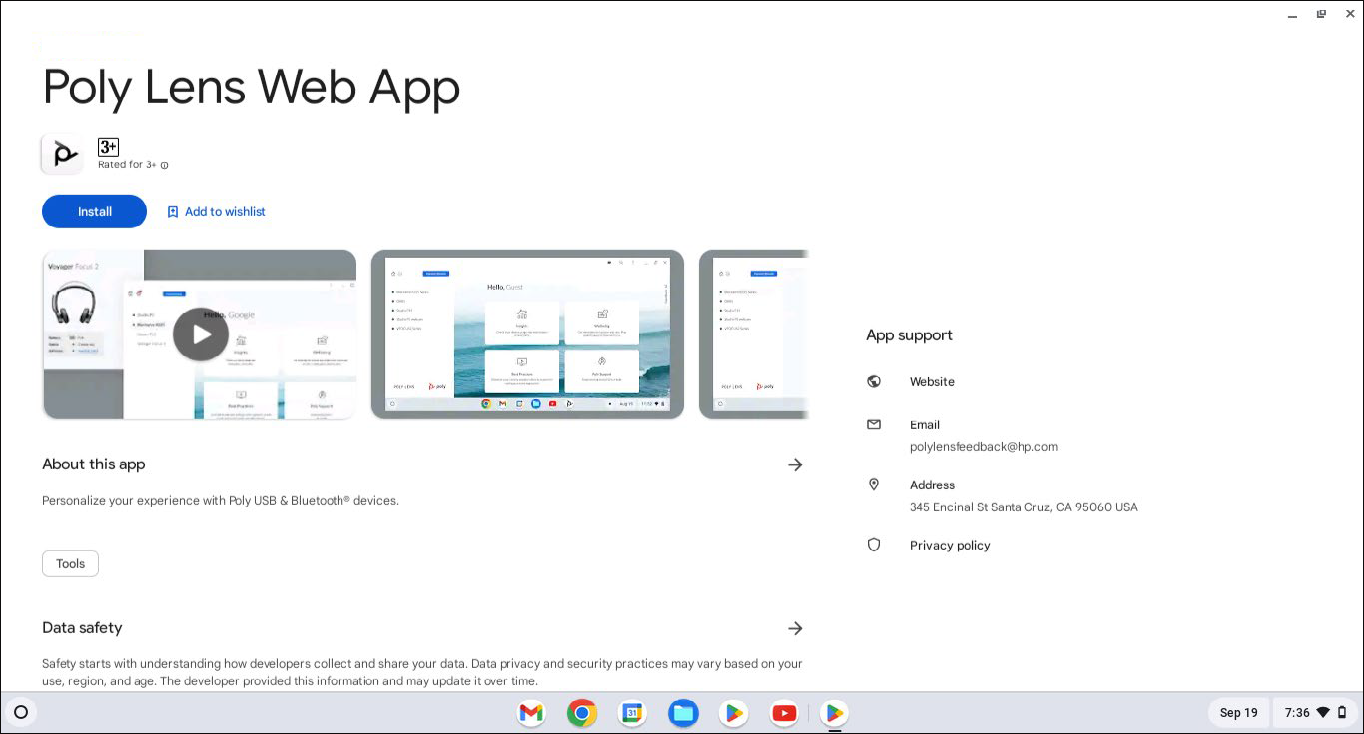Coming soon with PolyOS 4.4.0
The HP|Poly and Pexip partnership continues to strengthen with the release of Poly Meeting Control App. The new video endpoint capability has been co-developed within this growing partnership to enable rich feature experiences when in a PrivateConnect, or CloudConnect powered by Pexip call with Microsoft Teams or Google Meet.
What features does the Poly Meeting Control App offer?
The Poly Meeting Control App provides users with an elegant and intuitive interface, allowing them to effortlessly initiate video calls, share content, and adjust the camera settings. During meetings, the app lets users raise hands, lock the meeting, manage participants, mute, and unmute the microphones, control the volume, admit or reject participants, and view incoming chats from meetings.
Why IT Decision Makers Should Care:
- Availability: Meeting Control App is available on 1Poly video devices running OS 4.4.0 and Poly TC8 and Poly TC10 Touch Controllers.
- Entry Control: Simple UI for allowing or restricting meeting entry.
- Video Layout: Template wizard shows layout options for single and dual screens.
- Audio,Chat: Mute and unmute participant audio while viewing chats from the Pexip meeting.
“We are committed to supporting meeting room vendors with the technology they need to deliver secure and seamless meeting experiences, which is why we collaborate with industry leaders like Poly, Cisco, and others. We see that our co-developed Meeting Control App is enhancing Poly’s secure meeting experience, which means that users in highly regulated industries do not have to sacrifice features and functionality in the name of security. Pexip and Poly offer you both,” says Lauren Eustace, VP Strategic Alliances, Pexip.
In just one year of collaboration, Poly has transitioned 65% of its customer base to the Pexip platform and notes a significant uptake in their Pexip-powered solutions, which cater to the specific privacy requirements of highly regulated entities such as an international defense alliance, a major energy company, a higher educational institution, among others.
“With the integration of Poly and Pexip, our customers receive the security, interoperability, and functionality they need for their critical meetings. We intend to keep collaborating to deliver more value, aiming to introduce additional features and flexibility to support our solutions. The launch of our co-developed Meeting Control App is a key milestone in this endeavor,” says Marty Sexton, Senior Product Marketing Manager, HP|Poly.
When it comes to connecting your employees, the HP|Poly Meeting Control App delivers the required meeting control and customization some organizations request, and many organizations require. To learn more, contact your HP|Poly Account Manager or authorized partner.
1Poly G7500, Poly Studio X30, X50, X52, X70, X72, TC8, TC10
